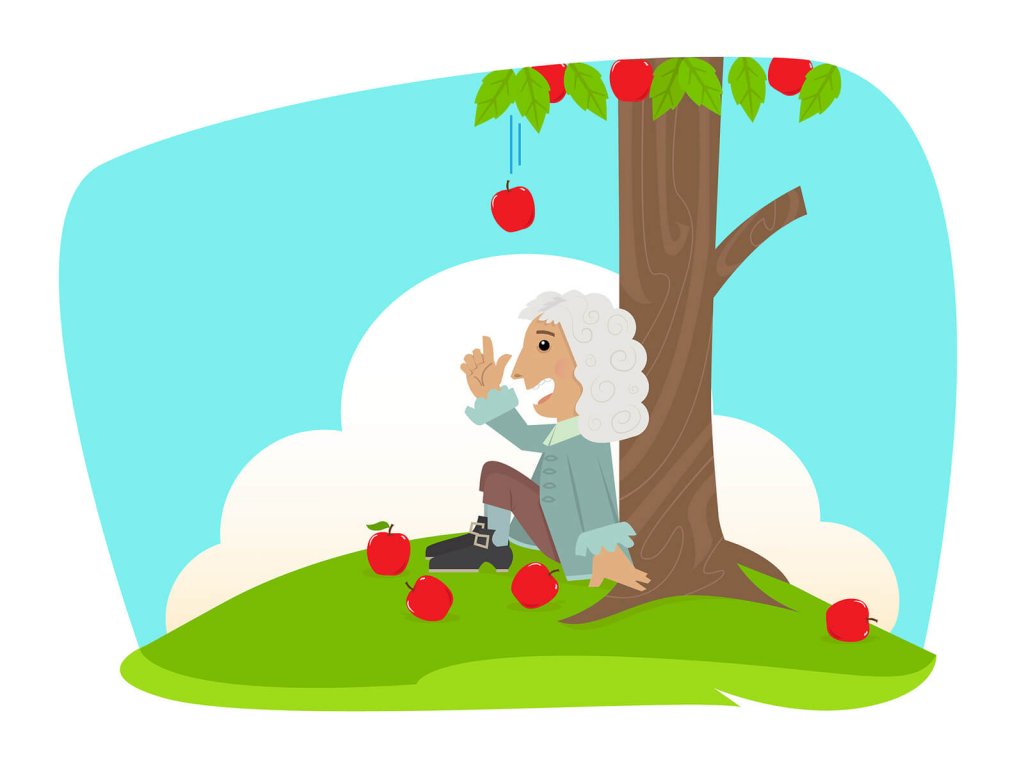
Newton’s Laws of Motion basically explain the constant velocity of an object unless acted upon by a force. the mass of the object multiplied by the acceleration of that object. and the equal and opposite reaction of the force of that object.
Three statements describing the relations between the forces acting on a body and the motion of the body. first formulated by English physicist and mathematician. Isaac Newton, which are the foundation of classical mechanics. Newton further studied Gaileo’s ideas. on force and motion presented three fundamental laws are known as Newton’s law of motion and motion.
While Newton’s laws of motion may seem obvious to us today, they were consider revolutionary centuries ago. The three laws of motion help us understand how objects behave when standing still, when moving and when forces act upon them. This article describes Sir Newton’s three laws and a summary of what they mean.
Essentially, laws define the means by which motion, specifically the way in which those changes in motion are related force.
Newton’s first law of motion:- law of inertia

An object remains in a state of rest or of uniform motion in a straight line Unless compelled to change that state by an applied force.
In other words, all objects resist all change in their state of motion in a qualitive way. The Tendancy of undisturbed objects to stay at rest. or to keep moving with the same velocity is called inertia. that is why the first law of motion is also known as the law of inertia.
Inertia
the inertia of an object is measured by its mass.
Inertia is the natural tendency of an object to resist a change in its State of motion or of motion
Example
when we are standing in a bus and the bus begins to move suddenly. Now we tend to fall backwards. This is because the sudden start of the bus brings motion to the bus as well as to. our feet in contact with the floor of the bus. But the rest of our body opposes this motion because of its inertia.
Newton’s Second law of motion :- F=ma
The rate of change of momentum of an object is proportional to the applied unbalanced force in the direction of the force.
Momentum
P of a body is define to be the product of its mass m and velocity v, and is present by P.
P=mv
Example
while catching a fast moving cricket ball, a fielder in the ground gradually pulls his hands backwards with the moving ball? In doing so, the fielder increases the time during which the high velocity of the moving ball decreases to zero. Thus, the acceleration of the ball is decrease and therefor the impact of catching the fast moving ball is also reduce.
prove that F=ma
MATHEMATICAL FORMULATION OF SECOND LAW OF MOTION
Suppose an object of mass, mis moving along a straight line with an initial velocity, u. It is uniformly accelerated to velocity. u in time, t by the application of a constant force, F throughout the time, t. The initial and final momentum of the object will be. p1= mu and p2 = mv respectively.
The change in momentum ∝ p2- p1
∝ m×(v – u)
The rate of change of momentum ∝ [m×(v – u)]/t
F ∝ [m×(v – u)]/t
F = (km×(v – u))/t
=k m a
here, a is the acceleration which is the rate of change of velocity
and the quantity, k is a constant of proportionality.
the unit of force is chose that the value of the constant, k becomes one.
Newton’s Third law of motion
For every action, there is an equal and opposite reaction.
Example
Punching an object: When we punch an object or kick something, the object may break due to our force which is an action. But we also a get a force onto our hands and legs as a reaction force. That is why you feel pain after slapping someone or punching a wall.
Conclusion:
Newton’s Laws of Motions are still regard as the three fundamental laws of physics. The foundation of classical mechanics was built on these three laws. In a nutshell, the Law of Inertia, the Law of Mass and Velocity, and the Law of Equal and Opposite Reaction are the three laws of motion.
https://science.howstuffworks.com/innovation/famous-inventors/5-isaac-newton-inventions.htm



Be the first to reply